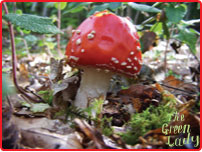 |
| The Botanical School in Pisa Botanical Gardens. |
 |
| One of the well kept ponds in front of the Botanical School. |
 |
| A welcome shady area. |
 |
| Giant bamboo on the left and a Magnolia tree planted in 1787 on the right. |
 |
| The delicate Mock-Orange (Philadelphus) flower and the Prickly Pear (Opuntia) cactus. |
In this blog I strive to show everything I see that is amazing in the natural world. In a world that is sick in many ways there are many, many wonderful moments. People have said I must live a wonderful life when they look at my blog. In many ways I do. I live a flawed life that is full of emotion, drama, conflict, joy, sadness, peace. My Polish friend told me that when Eastern European women would do their weaving they would make a deliberate mistake somewhere because they believed only God is perfect. Whether you believe in God or not, accepting imperfection saves a lot of energy; loving it saves a lot of disappointment. To try to be your best is sometimes all we can do. A couple of weeks ago I was threatened and chased by a drunk man while walking with my friend on a sunny afternoon. I had such a massive flight or fight reaction to it that it took me a whole week to settle my nervous system back into balance and be able to think straight again. The quickest root to recovery from distress for me is to accept it and talk about it, laugh and hide from the world for a while if necessary and learn. How do my actions affect others and the world around me?
We can learn from nature that nothing is static, everything passes. I've just come back from a weeks holiday in the beautiful region of Tuscany in Italy thanks to my in-laws, for a reunion of friends and family. Looking now at the cold wind throwing the trees about at the bottom of my garden makes me feel that the warm, sunny days by the pool were a dream. In many ways they were. We flew to Pisa where we had a hotel for the night. There's nothing like the first day of being in a new country with unfamiliar language, temperature, sights and sounds. I was delighted to discover there was a botanical garden very close to our hotel so we headed their first. We only had half an hour until closing time and ended up rushing around the garden in order to see everything. The botanic Garden in Pisa was founded in 1544 by Luca Ghini. It was relocated from it's original riverside location to one near the Convent of Santa Marta in 1563. It was the first university botanical garden in Europe and is still used by the University of Pisa today. It also contains one of the earliest iron-framed hothouses built in Italy. Rather than rushing you through the gardens like we did I will share a little bit at a time. I learned the story of the garden and its trees and plants when I was researching it back home. It made me view the place with a whole new reverence. My first thought when I arrived was 'it's a bit old and neglected' because on the surface it was. This made me laugh because every thought I have about the world around me is actually about myself. There is always something to learn.






























